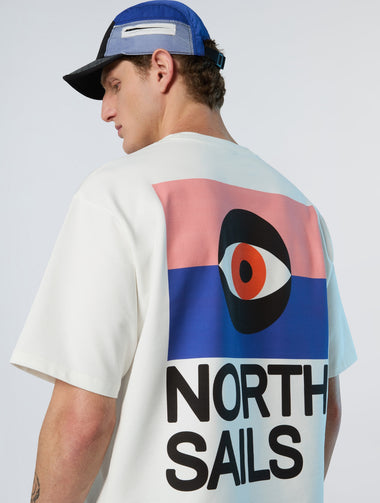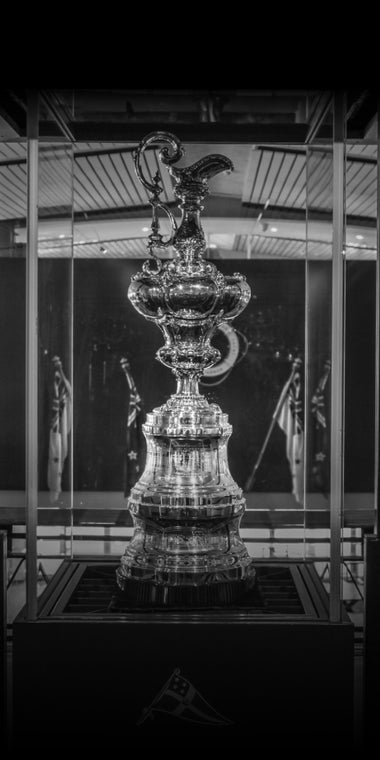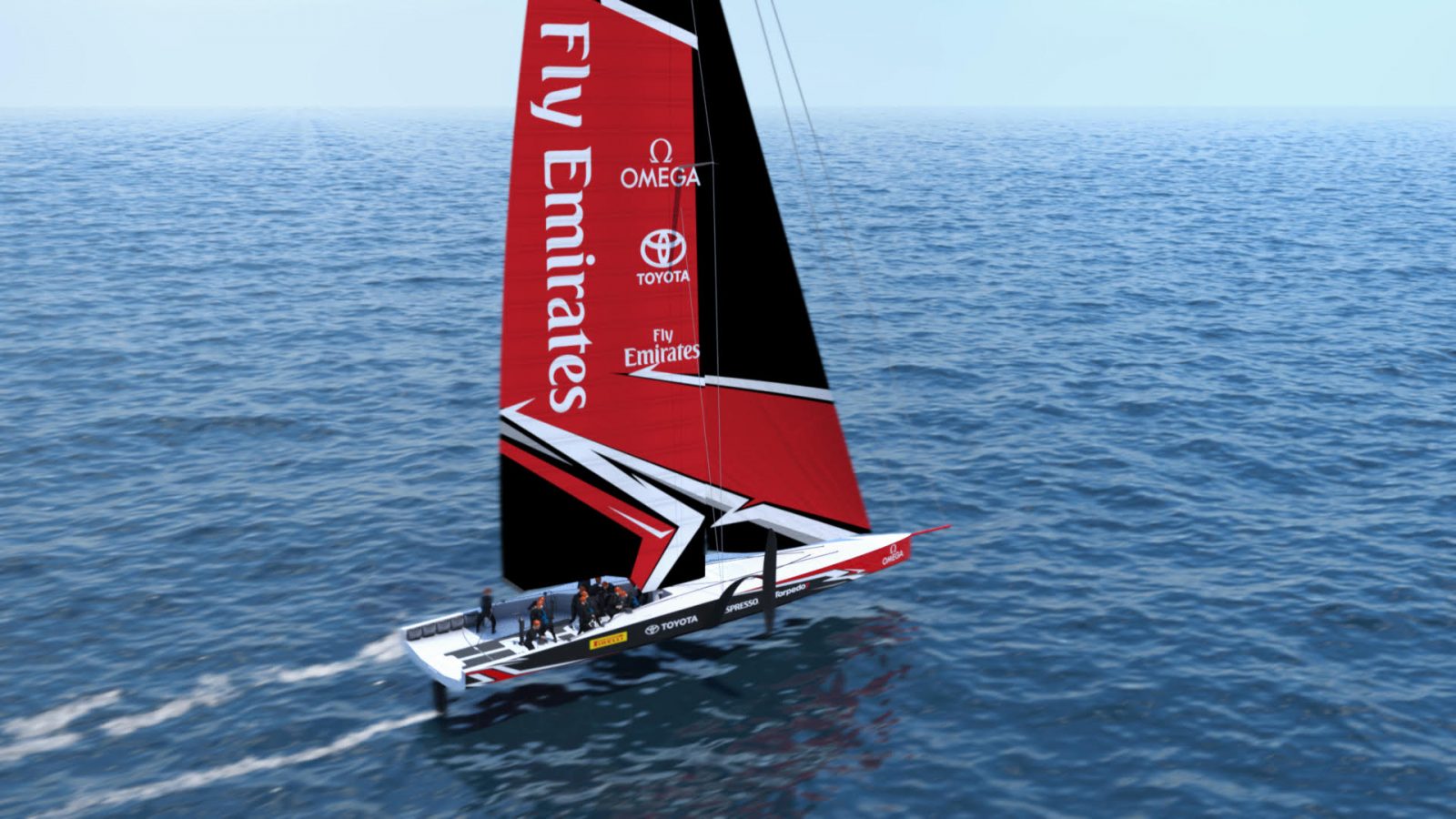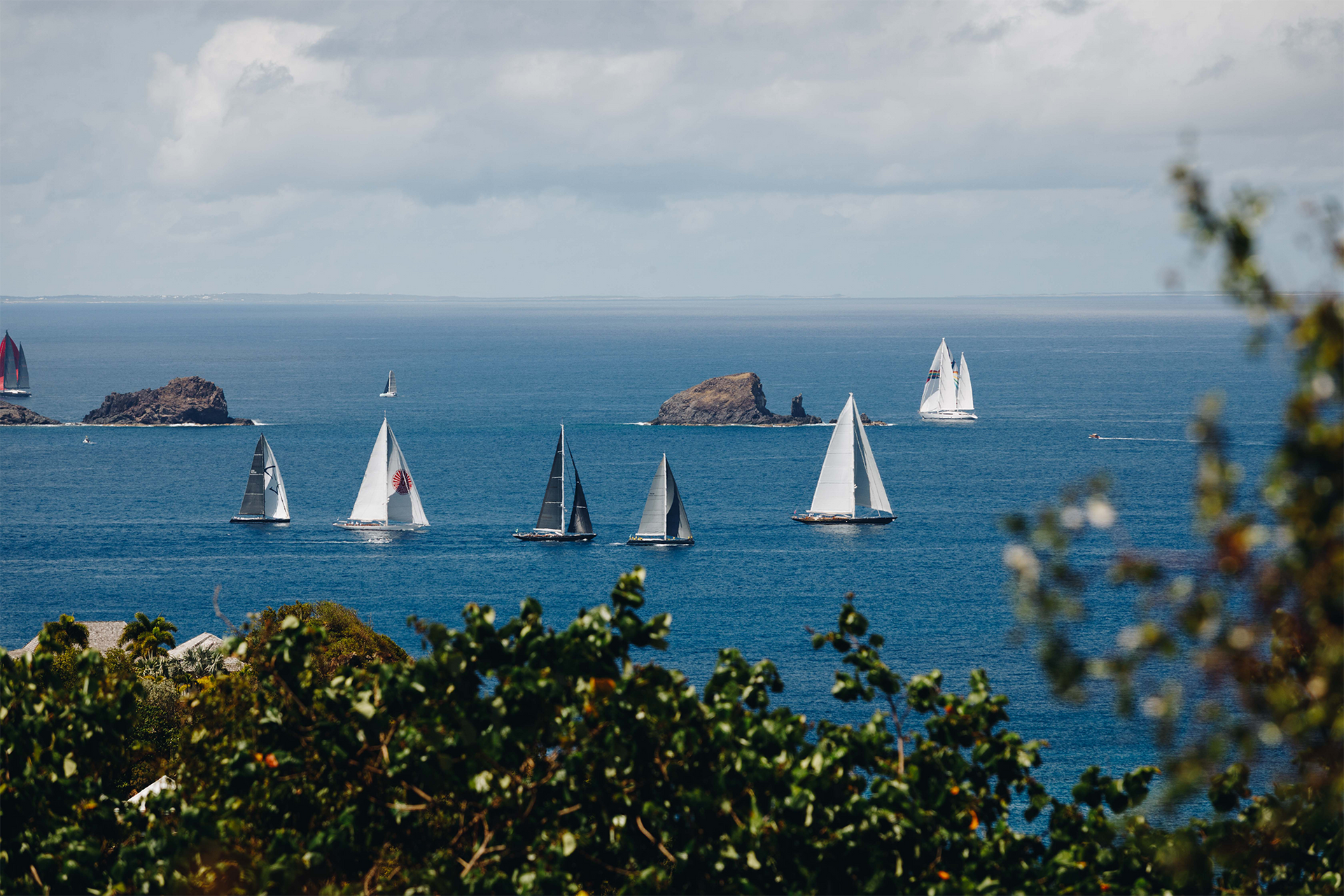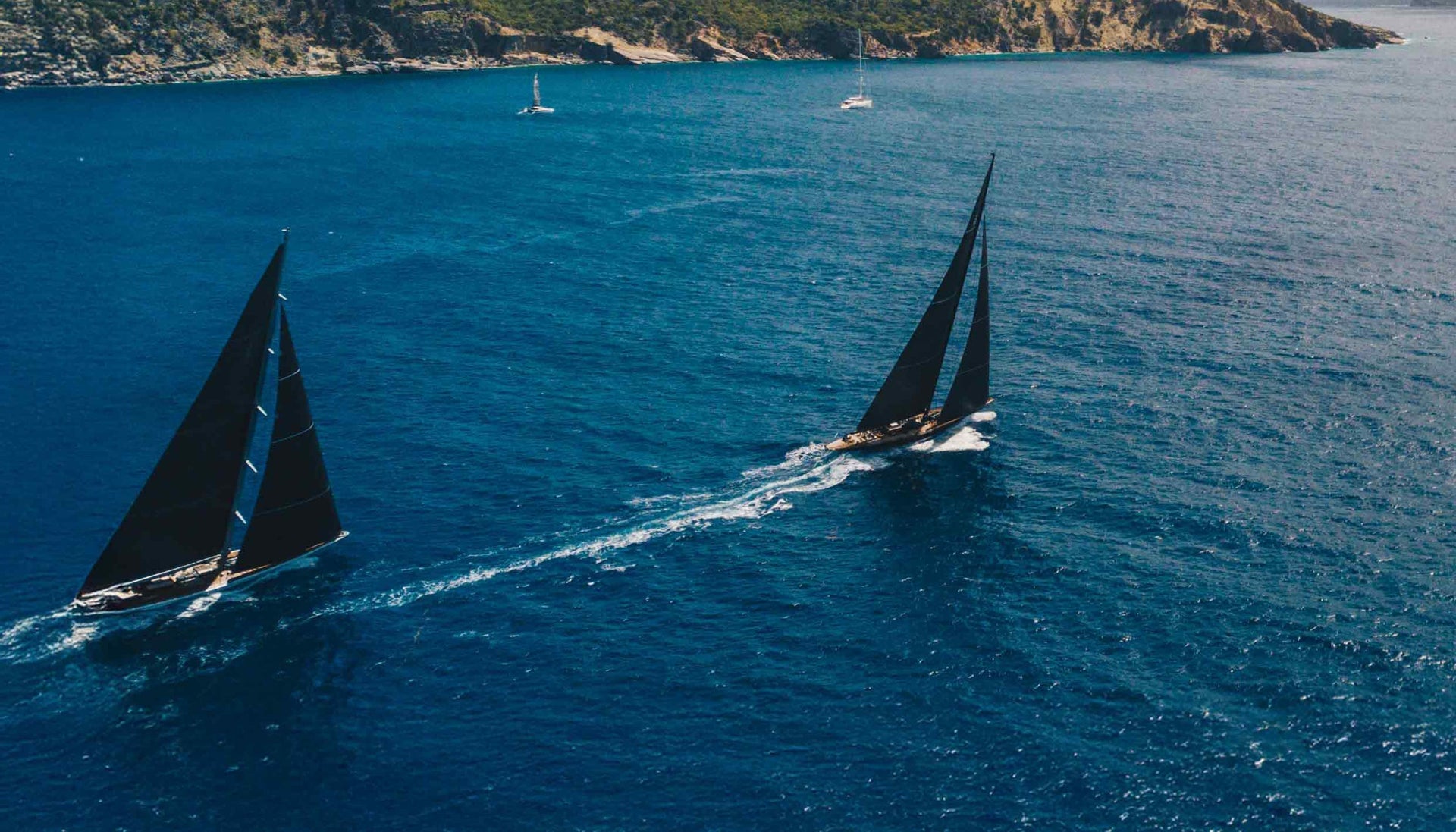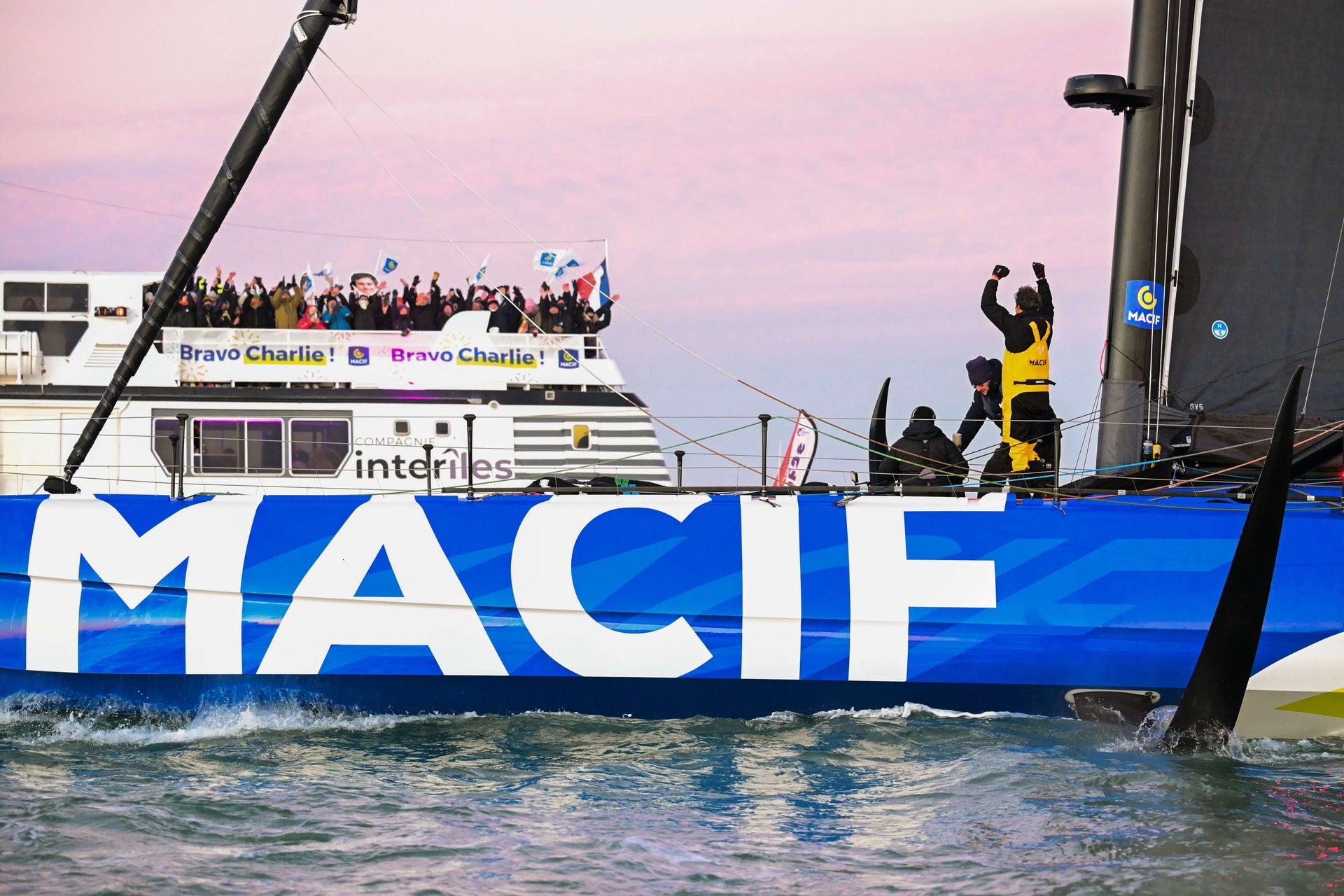BRINGING POWERFUL TOOLS AND EXPERIENCE TO THE 36TH AMERICA'S CUP
BRINGING POWERFUL TOOLS AND UNPARALLELED EXPERIENCE TO THE 36th AMERICA’S CUP
North Technology Group Companies Deliver an Engine above the Deck
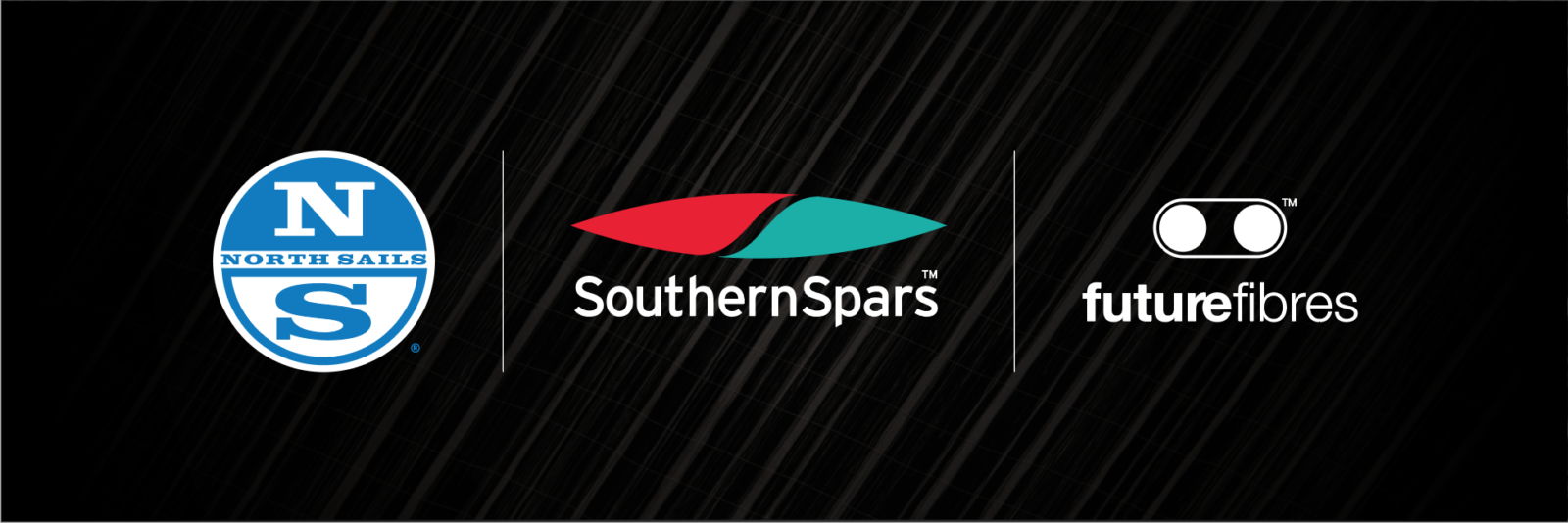
The year 2019 will be a historic one for the America’s Cup, the competition for the oldest trophy in international sport, and the North Technology Group, with a particular focus on North Sails, Southern Spars and Future Fibres, will play an integral role.
Later this year, teams are scheduled to launch their first AC75 race boats, incredible foiling monohulls capable of reaching speeds around the track that have never been seen before in the America’s Cup – or anywhere else in a sailing competition, for that matter.
Providing the power to push these boats into the red zone – speeds are expected to be approaching 50 knots by the time racing starts in the America’s Cup in 2021 – is a revolutionary rig and sail design, the result of years of investment in engineering and research and design. North Sail Designer Gautier Sergent commented;
“Emirates Team New Zealand came to North Sails right after they won the America’s Cup in Bermuda. The Kiwis recognized we were the only ones advanced far enough down the track to accurately model a new concept like this.”
While the last two editions of the America’s Cup utilized a rigid wing sail, the logistical challenge of handling the rigid wing is prohibitive in larger boats, where cranes and a shore crew is needed before and after sailing to handle the wing operation.
So the 2021 America’s Cup will use a more traditional style mast with a twin skin sail that can be raised and lowered by the sailors at sea, more like a traditional sloop. Importantly, due to the ease in logistics and cost, this allows for a trickle-down effect of the technology to everyday sailors.
The performance goal is to be as close to as aerodynamically efficient as the rigid wing of the past while keeping the power consumption on board at a reasonable level and ensuring the loads on the rig and through the control systems are manageable.
This is far from an easy problem to solve, so best-in-class software modeling and design experience are critical to coming up with a winning design.
To date, North Sails has been selected as the supplier of choice by the majority of teams currently training for the 36th America’s Cup. This is no coincidence – North Sails has supplied every challenger and defender in the famed competition since 1988.
“North Sails has taken a leading role in the America’s Cup because the company has always strived to be the technological leader,” said company President and former America’s Cup skipper Ken Read.
“We have a huge depth of talent within our company and some very smart people that are world-leading in what they do. The America’s Cup is an event that continues to challenge even the greatest of minds and forces us all to look at things in new ways – the next cycle will be no different and we are really excited that North Sails will be right at the cutting edge.”
For the upcoming 36th America’s Cup, North Sails, Southern Spars and Future Fibres are combining their talents and know-how to provide the ‘Engine Above Deck’, which will produce the power to generate speeds that lift the AC75 monohull up out of the water and onto hydrofoils, which greatly reduces drag in the water and dramatically increases the speed of the boat.
“Southern Spars and North Sails have developed software tools together for a long time and it’s a very powerful asset for us. If you looked back and compared it to how we worked even 10 or 15 years ago, it’s been a massive evolution.”
But the three companies are acting as more than just suppliers to the teams. In fact, their engineers and designers helped the defending champion, Emirates Team New Zealand, and Challenger of Record, Luna Rossa, by contributing expertise to the design rule for the AC75. And now, several North Sails designers are integrated into the America’s Cup design teams.
“Emirates Team New Zealand came to North Sails right after they won the America’s Cup in Bermuda in June 2017 to use our software tools to help model the new AC75 concept to determine things like the rig size and how the twin skin system could work, for example. The Kiwis recognized we were the only ones advanced far enough down the track with not just the software tools, but the right people as well, to accurately model a new concept like this,” said North Sails designer Gautier Sergent.
“We worked on the aero package for the rule for about eight months, so a lot of the development for the tools that we use in the North Design Suite was done prior to the AC75 design rule being released.”
From that advanced but generic starting point, the North Sails designers who have since become integrated into different America’s Cup teams now work independently of the mothership, putting all of their efforts into designing the fastest package for their team.
Sergent, for example, is a member of the INEOS Team UK, the British challenger, working as the lead on Sail Design and Aerodynamics.
“The development we do from now on is proprietary to each team, so when we have the team hat on, we are still designers for North Sails, but we are competing with each other. There are no friends until after the last race!”
It’s a similar story at Southern Spars and Future Fibres where years of expertise and experience were drafted in to help with the design rule.
“We started off by building some smaller rigs to test the twin skin concept, which worked out pretty well and then we got into developing the rig for the boat. That’s a process that’s gone on for the better part of a year,” said Mark Hauser from Southern Spars.
“We’ve had a long-term relationship with Emirates Team New Zealand that is probably second to none, so it’s a natural evolution for us to step in and contribute.”
And just as with North Sails, there are Southern Spars designers and engineers embedded with the teams. Jarrad Wallace is a design engineer who has moved across to join the rig programme with INEOS Team UK.
“The rig on the AC75 is doing more than just holding the sails up,” Wallace says. “It’s actually part of the wing, so the interface is extremely important, especially with the control systems. The key difference is being able to control the head position of the sail, which is quite revolutionary in terms of soft sails, and that has a massive effect on the loadings on the rig. So our software lets us model that and then we can use that information to engineer the mast to do its job.”
“Southern Spars and North Sails have developed software tools together for a long time and it’s a very powerful asset for us. We’ve had to take that a step further for these rigs to improve the way we model this aero package and I don’t think anyone else in the world could do that at this level,” Hauser added.
“The level of detail in how we interact with North Sails over the years has increased dramatically,” Wallace explains. “It’s at the point now where we are sharing a common model, each having input in our own areas of expertise, and we make iterations in the software during the design phase so that by the time we go to build, we’re already at a very advanced level of refinement. If you looked back and compared it to how we worked even 10 or 15 years ago, it’s been a massive evolution.”
Burns Fallow is a North Sails design expert who is embedded with Emirates Team New Zealand for this Cup cycle.
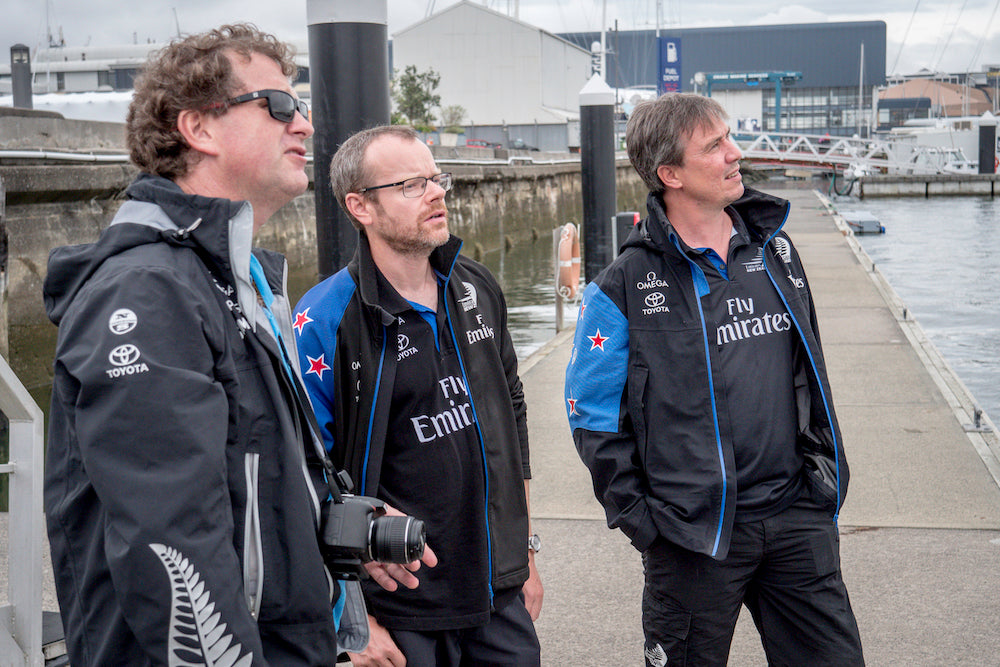
“I’ve been here for a year now, and we spent the first six months or so working on this new rig project with Southern Spars, Emirates Team New Zealand and Luna Rossa” Fallow said. “The question we were trying to answer was, what can we do that isn’t a wing but that has as many of the characteristics of a wing that we’ve had in the last two America’s Cups? One of the key things that North Technology Group could bring to the table was that we were really the only people who could bring any simulation software and adapt it quickly so it could be a tool to evaluate our ideas to see what would work practically.”
Here, it was the North Sails Membrain™ software, which balances wind pressure, sail shape, and rig forces, within the design suite. Fallow worked with fellow North senior design expert Michael Richelsen to simulate how the twin-skin wing might work at the scale needed for the AC75.
“I briefed Michael on what we were trying to achieve and after some intense software development, we had a working version of Membrain that helped us answer those big questions within weeks,” Fallow said. “Since that time we have been adding more and more features to make even more refined models. Overall, this is one the most exciting and progressive projects I have been involved with in my 30 years at North Sails.”
Membrain uses data from the wider suite of North design software to simulate what happens to the rig/sail combination as a unified structure when it is subjected to different loads. As the structure is deformed under load, the shape of the sail changes and Membrain pushes the data back through the other North software programs, most notably Flow™ (which applies wind pressure to sail surface and calculates the forces created), to acquire updated pressure field data. The process revises the sail shape in Membrain in a circular feedback loop until a stable balance is achieved.
“The question we were trying to answer was, what can we do that isn’t a wing but that has as many of the characteristics of a wing that we’ve had in the last two America’s Cups?
Since the AC75 design rule was published, Richelson has joined Luna Rossa Challenge, while Fallow has bunkered down with Emirates Team New Zealand, where he works with the Aero Design team. But he says the project isn’t simply a case of looking at what happens above the deck. All the systems, from the rig to the soft wing sail and its control system, to the foils under the water need to be designed to work in harmony.
“What’s critical to any America’s Cup design team now is the VPP (Velocity Prediction Program) and simulation modeling,” he notes. “We need to be sure that the input we provide into that model, which is about half the equation – the aero side as opposed to the hydro side – is as accurate and realistic and versatile as it can possibly be. That alone involves hundreds and hundreds of simulations to build up a realistic model.
“One thing that has changed over the past 10-12 years or so is that in the past, developments needed to be verified with two-boat testing on the water. That gets hugely expensive in terms of time and people. But with the software becoming so much more sophisticated, the developments we make in the virtual world are now accepted as being ‘real’ and so the concept of two-boat testing is essentially over. So the development cycle is much, much quicker now.”
For all of the designers and engineers in this America’s Cup, the work won’t stop until the final race of the event is over. The quest for speed continues all the way across the finish line in the last race.
“The cool thing about the whole process is that it’s not just a tool for designers, it’s ultimately for the benefit of the sailing team as well. Remember the concept for the AC75 is only about a year old and looking back, what we had then was pretty rudimentary. When the first boats launch this summer we’ll get some real world validation and that will help us figure out where we were right and where we can improve in our simulation and the net result is that it will continue to get better,” Fallow concluded.
And when the 36th America’s Cup is over in 2021 the designers and engineers from the North Technology Group will get together for a debrief to advance the tools that help the companies design sails and rigs for dozens and dozens of classes.
“When you get involved in new projects you share the experiences and knowledge that you have. You don’t just sit in your own little bubble,” Fallow says. “That’s the way we all get better. That’s how the companies get stronger.”


